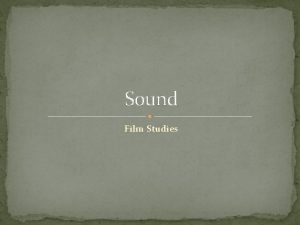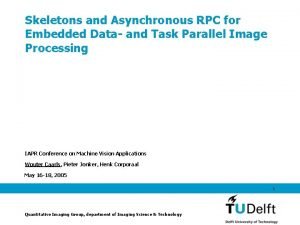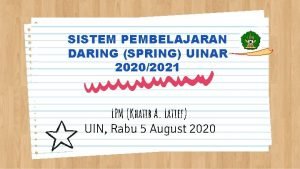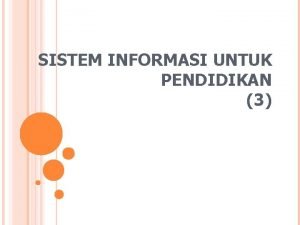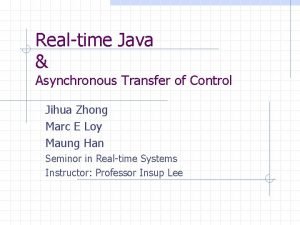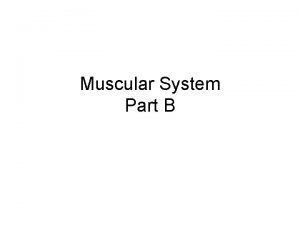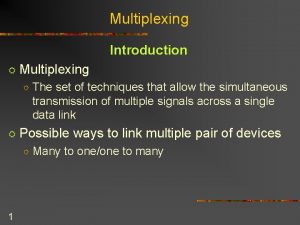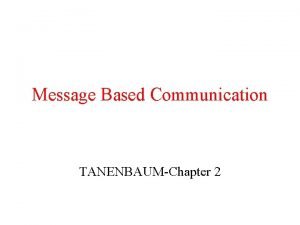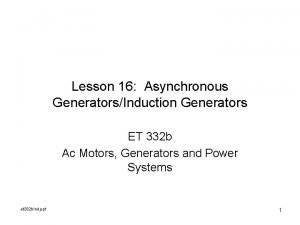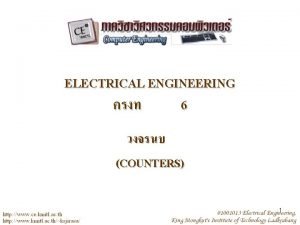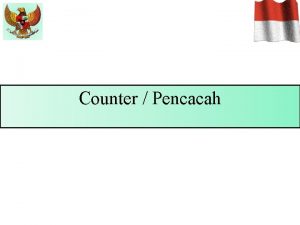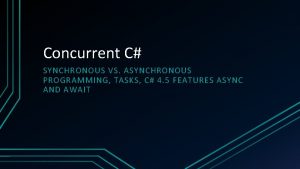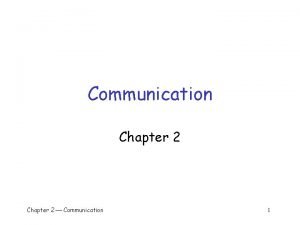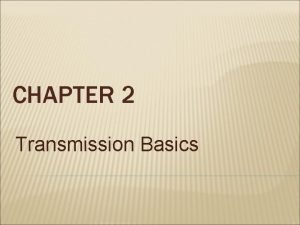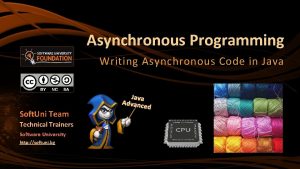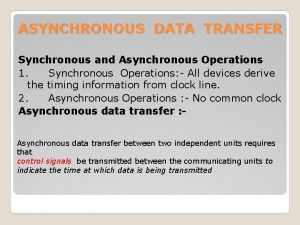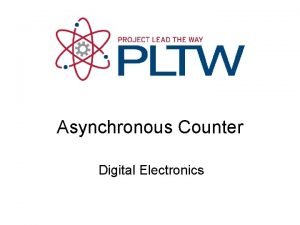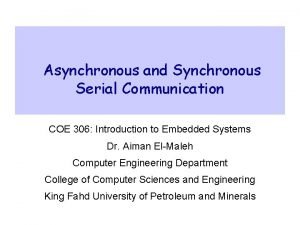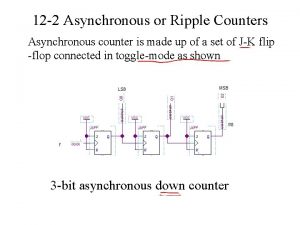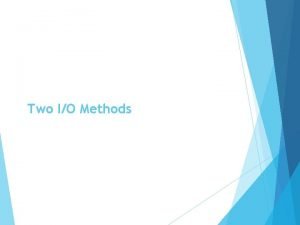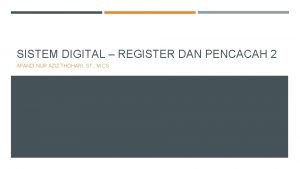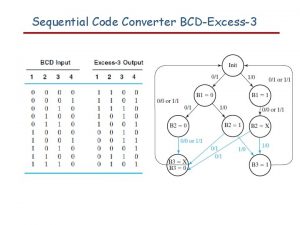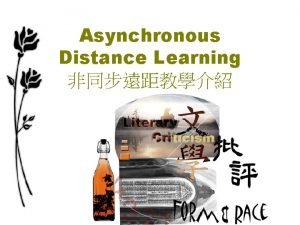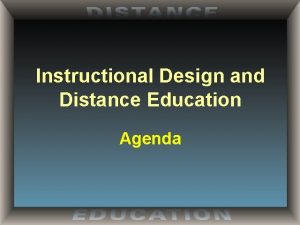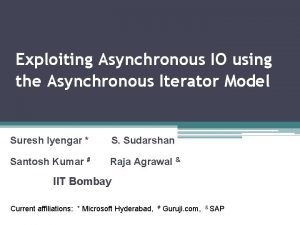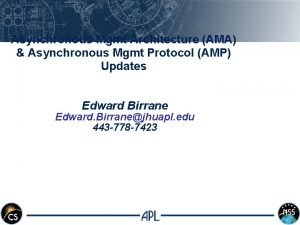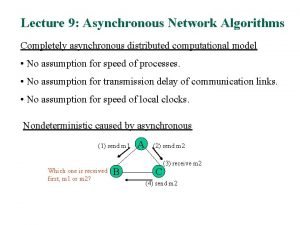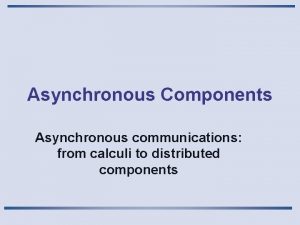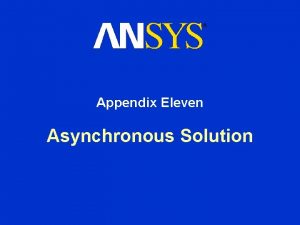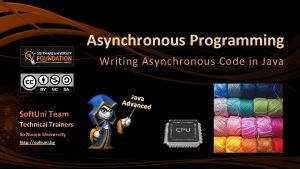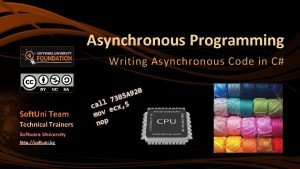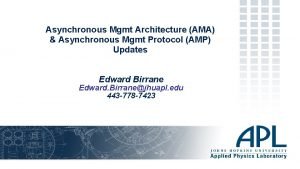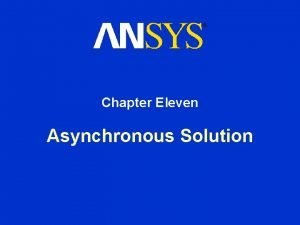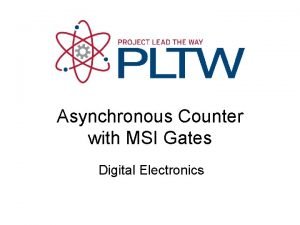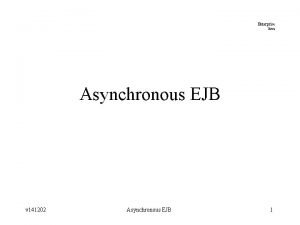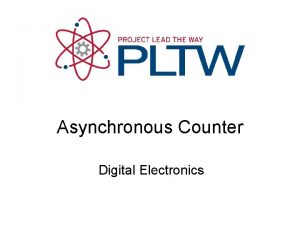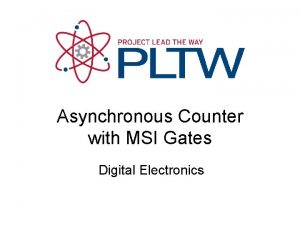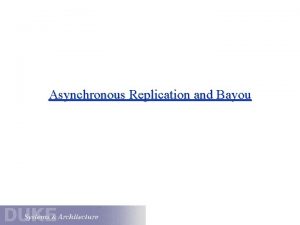Distance Education Systems Agenda Distance Education Systems Asynchronous























- Slides: 23

Distance Education Systems Agenda

Distance Education Systems Asynchronous Communication: • Delayed interaction between teacher and student. Synchronous Communication • Real-time interaction between teacher and student

Asynchronous Technologies "Correspondence Study" • Print-based • Audio-based – radio – audiotape • Video-based – broadcast television – videotape

Print-based Correspondence Normally, learning materials (textbook, study guide) are delivered by mail. Original form of distance education -dates from mid-1800 s.

Advantages – Learner-paced – Can be used anywhere – Low cost Disadvantages – Limited interactivity – Motion cannot be shown – Tarnished reputation

I opened a letter and read it. it offered me a six months' correspondence course in finger printing at a special professional discount. I dropped it into the wastebasket. . . " The Big Sleep. by Raymond Chandler

"Allied Commissioners' Courses; be a detective, send for a one-volume correspondence course. No tests, no instructors, no salesmen will call. Free handcuffs and badge included as a special bonus if you act now. " Good Behavior. by Donald Westlake

Audio and Video-based Correspondence Study Learning materials include textbook and workbook, plus audio-or videotape • Advantages: similar to print-based. with visual and/or audio component • Disadvantage: limited interactivity

Interactive Telecommunications • • • Audioconferencing Satellite Microwave (ITFS) Compressed video Fiber-optics

Audioconferencing Teacher and students linked by telephone --a "conference call. " • Advantages: relatively inexpensive, flexible • Disadvantage: lacks visual component

Satellite-based Distance Education "Uplink" transmits signal to satellite in geosynchronous orbit. Transponder amplifies signal, transmits it back to earth. Signal is received by "downlinks" (satellite dishes):

Satellite

Advantages • Huge "footprint" means programming can be delivered virtually anywhere to virtually unlimited number of sites Disadvantages • Very expensive to purchase and operate • Normally, video is only one way and students use telephone to communicate with teacher

Microwave-based (ITES) Distance Education • • • Essentially, low powered TV Special frequencies/channels Point-to-point or multipoint Line-of-sight, 25 -30 miles max. Usually one-way video, two-way audio

Advantages • • Full motion video Control over who receives signal Excellent audio and video quality No right-of-ways required Jones. et al. , 1992

Microwave

Disadvantages • Transmissions affected by weather • Line-of-site only • Limited number of frequencies available Jones. et al. , 1992

Compressed Video-based Distance Education • Analog video signal digitized, then: • Processed to reduce unnecessary information transmitted • Copper telephone lines connect sites • Not full-motion--fewer than 30 images per second

Advantages • Easy to install and use • Can be cheaper than fiber or microwave Disadvantages: • Motion can be jerky • Video quality can be poor • Can't transmit full-motion video Jones. et al. , 1992

Compressed Video

Fiber Optics-based Distance Education • Used for telephone and cable TV main trunk lines • Only recently used for education • Cable uses optically pure glass • Transmits light energy

Fiber Optics

Advantages • Full-motion video • High quality • Unaffected by weather Disadvantages • High start-up costs • Slow, expensive repairs • Right-of-way costs Jones. et al. , 1992
 Agenda sistemica y agenda institucional
Agenda sistemica y agenda institucional Pleonastic sound
Pleonastic sound Embedded rpc
Embedded rpc Pembelajaran synchronous dan asynchronous
Pembelajaran synchronous dan asynchronous Pembelajaran synchronous dan asynchronous
Pembelajaran synchronous dan asynchronous Asynchronous transfer of control
Asynchronous transfer of control Eccentric movement
Eccentric movement Synchronous and asynchronous tdm
Synchronous and asynchronous tdm Message-oriented communication
Message-oriented communication Induction generator ppt
Induction generator ppt Asynchronous
Asynchronous Jenis jenis counter
Jenis jenis counter Synchronous vs asynchronous programming
Synchronous vs asynchronous programming Transient and persistent communication
Transient and persistent communication What is synchronous and asynchronous data transfer
What is synchronous and asynchronous data transfer Java asynchronous programming
Java asynchronous programming Asynchronous data transfer
Asynchronous data transfer Asynchronous counter design
Asynchronous counter design Synchronous vs asynchronous data transfer
Synchronous vs asynchronous data transfer Asynchronous up counter
Asynchronous up counter Advantages of asynchronous transfer mode
Advantages of asynchronous transfer mode Two i/o methods
Two i/o methods Asynchronous register
Asynchronous register State diagram to state table converter
State diagram to state table converter

